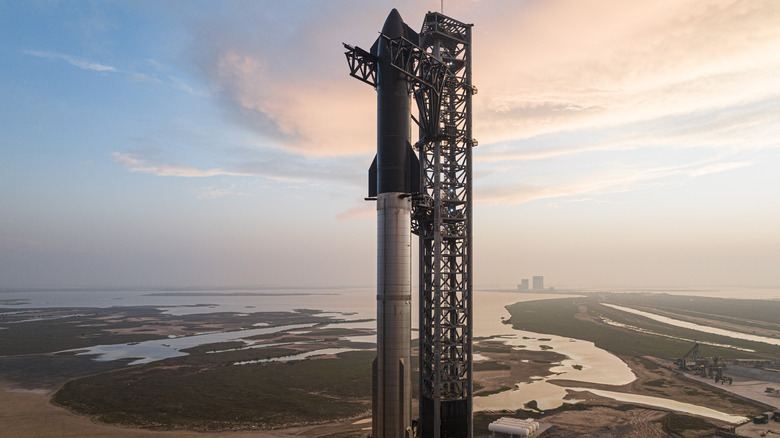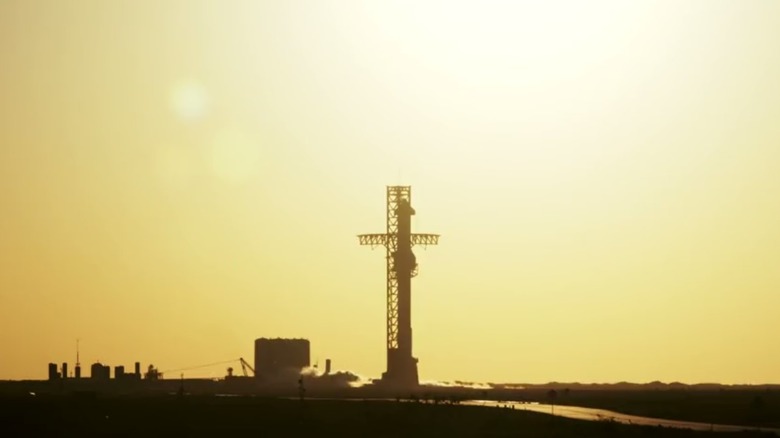SpaceX Starship's First Test Flight Called Off At The Last Minute
The first flight test of SpaceX's Starship, the vessel that will supposedly be able to carry occupants to the Moon and eventually Mars, was scheduled for this morning. However, according to tweets by SpaceX and Elon Musk, the tests will not go on as planned.
The spacecraft was reportedly being refueled and ready for an 8:20 a.m. Central Time launch from SpaceX's Starbase in Boca Chica, Texas. According to SpaceX CEO Elon Musk, a frozen valve forced the team to scratch the launch and postpone it for another day.
The tweet from Elon seems to imply that if the valve started working again, then the launch would go on, but SpaceX confirms that its team is looking for future opportunities to launch instead.
All space launches are incredibly complex and it's important to note that the moniker "Starship" refers to two separate spacecraft connected to each other: the Starship itself where crew and cargo would go, and the Super Heavy Booster that gives Starship the necessary push to escape earth's atmosphere.
A single valve reportedly scratched the launch
If all went according to plan, according to SpaceX; the Super Heavy booster would launch Starship up to a pre-determined altitude, where it would then break off and make a landing in the nearby Gulf of Mexico, after which it could hopefully be recovered and reused in further launches.
After reaching altitude, the Starship's own engines would ignite, allowing the vessel to move under its own power. Then, its engines would turn off, letting it coast into its entry point where it would then land in the Pacific Ocean. That's all easier said than done, of course.
Everything needs to be 100% in order for a test of this magnitude to go off without a hitch, especially if Starship is planned to carry people in the future. Even the smallest problems, like a stuck valve, can render the entire launch unsafe or otherwise unviable. It was likely the best course of action for SpaceX to cancel the launch to both prevent the possible launch of a multi-million dollar set of spacecraft, and ensure that the flight is reasonably safe for any future pilots and occupants as well.

